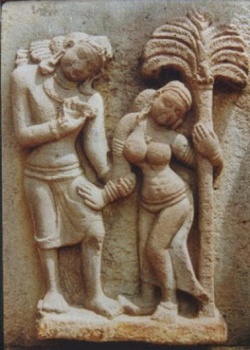Difference between revisions of "Mahanikaya"
(Created page with "thumb|250px| Mahanikaya literally means " the Great branch ". It may be compared to the Mahavihara in ancient Ceylon. King Mongkut (King Rama IV) sought...") |
|||
| Line 1: | Line 1: | ||
[[File:108 Mara.jpg|thumb|250px|]] | [[File:108 Mara.jpg|thumb|250px|]] | ||
| − | Mahanikaya literally means " the Great branch ". It may be compared to the Mahavihara in ancient Ceylon. | + | [[Mahanikaya]] literally means " the Great branch ". It may be compared to the [[Mahavihara]] in [[ancient]] [[Ceylon]]. |
| − | King Mongkut (King Rama IV) sought to give monastic life its former strictness, thus he founded a new movement within the Order and called it the Dhammayattika sect to distinguish it from the original Sangha, which was later called the Mahanikaya sect. | + | [[King]] {{Wiki|Mongkut}} ([[King]] {{Wiki|Rama}} IV) sought to give [[monastic]] [[life]] its former strictness, thus he founded a new {{Wiki|movement}} within the Order and called it the Dhammayattika [[sect]] to distinguish it from the original [[Sangha]], which was later called the [[Mahanikaya]] [[sect]]. |
| − | Time went on and both sects have changes and improvements so presently these two sects do not differ substantially in any way from each other. They all belong to Theravada and follow the conservative way of the study and practice of the disciplinary and doctrinal tenets. Both sects have the same Supreme Council of Ecclesiastical Administration presided over by His Holiness the Supreme Patriarch who may be appointed by His Majesty the King of Thailand. The Supreme Patriarch may belong to any sect as the case may be. | + | Time went on and both sects have changes and improvements so presently these two sects do not differ substantially in any way from each other. They all belong to [[Theravada]] and follow the conservative way of the study and practice of the disciplinary and [[doctrinal]] [[tenets]]. Both sects have the same Supreme Council of {{Wiki|Ecclesiastical}} Administration presided over by [[His Holiness]] the [[Supreme Patriarch]] who may be appointed by His Majesty the [[King]] of [[Thailand]]. The [[Supreme Patriarch]] may belong to any [[sect]] as the case may be. |
{{R}} | {{R}} | ||
[http://www.manjushri.com/Teachings/ti-Mahanikaya.htm www.manjushri.com] | [http://www.manjushri.com/Teachings/ti-Mahanikaya.htm www.manjushri.com] | ||
[[Category:Buddhist Terms]] | [[Category:Buddhist Terms]] | ||
[[Category:Thailand]] | [[Category:Thailand]] | ||
Latest revision as of 16:38, 5 February 2015
Mahanikaya literally means " the Great branch ". It may be compared to the Mahavihara in ancient Ceylon.
King Mongkut (King Rama IV) sought to give monastic life its former strictness, thus he founded a new movement within the Order and called it the Dhammayattika sect to distinguish it from the original Sangha, which was later called the Mahanikaya sect.
Time went on and both sects have changes and improvements so presently these two sects do not differ substantially in any way from each other. They all belong to Theravada and follow the conservative way of the study and practice of the disciplinary and doctrinal tenets. Both sects have the same Supreme Council of Ecclesiastical Administration presided over by His Holiness the Supreme Patriarch who may be appointed by His Majesty the King of Thailand. The Supreme Patriarch may belong to any sect as the case may be.
